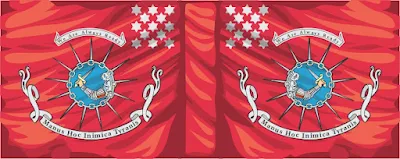Friday was another club game night! One if the great advantages of being in a club is you can try out different periods and games you normally don't play. Here was the round up.
Byron Chaplin - Wandiwash 1760
Rules: Volley & Bayonet, 15mm, 4 Players
Until January 22, 1760, the Compagnie des Indies of France and the British Honourable East India Company were evenly matched in India. But after the pivotal Battle of Wandiwash the British lion was ascendant on the subcontinent, while the sun of the House of Bourbon was in decline.
This positional battle almost has it all: Royal infantry, company troops and sepoys on both sides, French Marines, British grenadiers, European cavalry and native horse. The French, under the Compte Lally de Tollendal are not foreordained to lose. The British, led by Col. Eyre Coote, have to use their resources well and break the siege of Wandiwash. Do you have the stuff to make or lose an empire?
Mike Coppinger - Battle of Heraclea
Rules: Hannibal at the Gates, 28mm, 6 Players
The Battle of Heraclea takes place in 280 B.C. between the Romans under Consul Publius Valerius Laevinus and the combined forces of Magna Graecia (Southern Italy) and Epirus. Pyrrhus, King of Epirus, will be commanding the combined Greek forces of Magna Graecia and Epirus.
AJ Wright - Counter Attack at Röyttä
Rules: Iron Cross Action, 28mm, 6 Players
Germans counter attack at Röyttä to regain control of the crossing of the Torino river. This crossing is essential to the German withdrawal from Northern Finland.


























